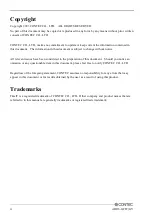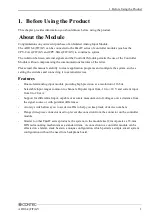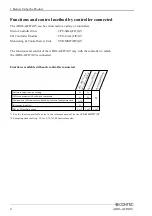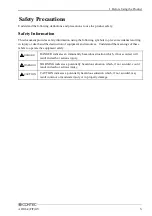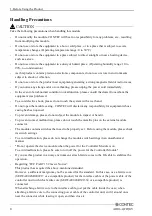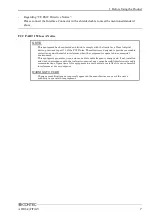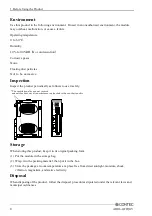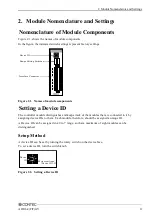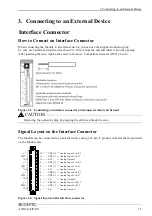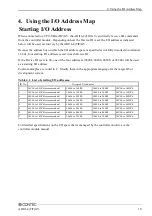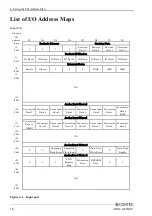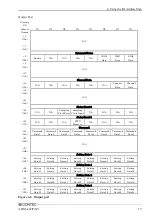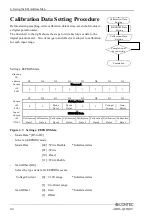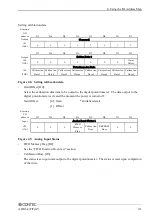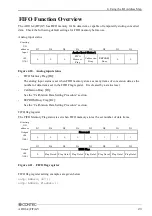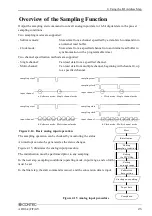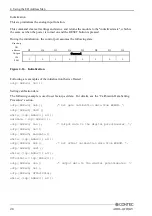
3. Connecting to an External Device
12
ADI16-4(FIT)GY
Analog Signal Connection
Differential input connection examples
This section gives examples of connecting analog input signals from an external device to the Module
using a flat cable and a shielded cable.
The following example uses a flat cable to connect the Module to an external device.
Connect the [+] and [-] analog input channels of the Module to the output and ground of the signal
source, respectively. Also connect the analog ground of the Module to the ground of the signal source.
*1 When using a ceramic capacitor, make the lead as short as possible.
Figure 3.3. Differential input connection (Flat Cable)
The following example uses a shielded two-conductor cable to connect the Module to an external
device. Use this type of cable if the signal source is located at a distance from the Module or if the
connection requires higher noise immunity. Connect the [+] and [-] analog input channels of the
Module to the output and ground of the signal source, respectively. Also connect the analog ground of
the Module to the ground of the signal source using the shield braid.
Figure 3.4. Differential input connection (Shield Cable)
-
If the signal source contains over 1MHz signals, the signal may effect the cross-talk noise between
channels.
-
Converted data is undefined with the analog ground unconnected.
-
If the connecting cable is affected by noise, accurate analog input may not be made. To secure the
accuracy, place the connecting cable far from the source of the noise and put a laminated ceramic
capacitor on the connector of the module.
-
When affected by noise, the connection cable may fail to input accurate analog signals. Route the
connection cable apart from noise sources.
-
The connection cable may fail to input accurate analog signals if it is long. The connection cable
should therefore be as short as possible.
Analog Input 0[+]...3[+]
Analog Ground
V
Module
Signal Source
Analog Input 0[-]...3[-]
Connector
Shield cable
CAUTION

